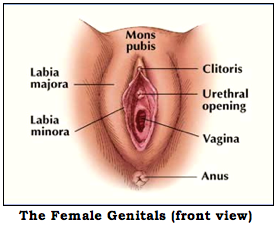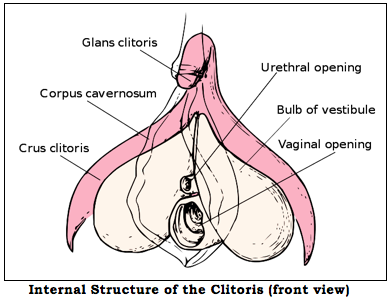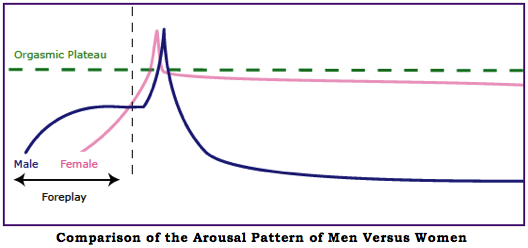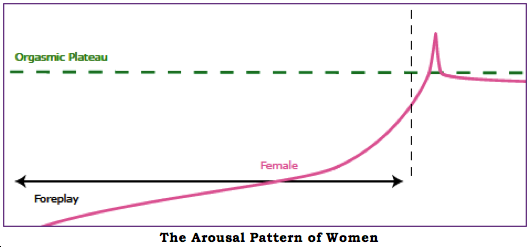Let’s Talk!
You’ve probably heard stories of people accomplishing incredible sexual feats. For example, it was rumoured that the singer Sting is effortlessly able to have sex for hours, whereas the average man barely lasts five minutes. Of all the sexual mysteries, multiple orgasms may be among the least understood.
The word orgasm comes from the Greek words orgasmos (swell) and orgein (to be lustful). It is the peak of the sexual response, during which both males and females experience intense sensations of pleasure.
Men can orgasm easily, and this ability may be the result of natural selection. Orgasm and ejaculation usually occur at the same time, and this instant reward encourages the heterosexual man to have intercourse with many females to spread his genes.
The function of orgasm in women is still being debated. The human female does not need orgasm in order to get pregnant, and unless she is stimulated for a long time, she may not climax. The paradox is that when women orgasm, the experience is more intense and lasts longer than men. Also, it is easier for women to have multiple orgasms. Anthropologist Robin Fox has argued that since the clitoris and the penis come from the same embryonic tissue, the orgasmic response of the human female is similar to that of the human male before he reaches puberty.
Both men and women can have orgasms from various kinds of sexual stimulation. For instance, it has been reported that nipple stimulation, sexual fantasies, or anal play can make some people climax. However, most individuals orgasm when their penises or clitoris are stimulated.
The pea-size clitoris is designed only for sexual pleasure and is made of erectile tissue (i.e., a tissue that becomes full of blood). This organ extends up several centimeters internally and has a pair of “legs†on both sides known as the clitoral crura (see diagrams below). The clitoris is the most sensitive female organ, with about 8, 000 nerve endings connected with 15, 000 nerve fibers in the pelvic area.
The penis is also made of erectile tissue and can be divided into two parts: the head (gland) and the shaft (see diagram below). This organ is used for reproduction and urination. After puberty, the average length of the erect penis is five to seven inches. The gland contains about 4,000 nerve endings, while the foreskin that covers it has about 20,000 nerve endings. Therefore, the tip of the penis is more sensitive than the clitoris.
A complex interplay of hormones and neurotransmitters gives rise to orgasm in both men and women. Testosterone is needed in order to maintain sexual interest, while normal levels of estrogen in women is necessary for general sexual health (i.e., natural production of vaginal lubrication).
Dopamine is the orgasm accelerator and affects the body almost immediately. This neurotransmitter is made in the lower brainstem, (specifically the ventral tegmental area). This ventral tegmental area is active during ejaculation in men. When women orgasm, the nucleus accumbens region receives dopamine from ventral tegmental area neurons.
In both men and women, the ability to mentally relax is key to having an orgasm. However, it seems that for women both the amygdala (which processes fear and anxiety) and the hippocampus (important for memory) have to be deactivated.
The arousal pattern of men and women is different (see diagram below). Men (bleu line) can quickly get aroused and usually reach orgasm within two minutes of penetration. Their orgasms last about 3-5 seconds. They have a long refractory period of about twenty minutes, during which they are unable to have another erection.
Women (pink line) take longer to get aroused and usually reach orgasm after fifteen minutes of assisted intercourse. Their orgasms last about 5-8 seconds, and they stay aroused for much longer. The refractory period is about three minutes.
In order to achieve multiple orgasms in both males and females, a different arousal pattern is necessary (see diagram below). Paradoxically, the key to having multiple orgasms is to avoid forceful stimulation that provokes one short intense orgasm. The other point to keep in mind is that men can have orgasms and not ejaculate (i.e., dry orgasms).
The woman (pink line) is sexually stimulated by having various erogenous zones touched (i.e., breasts, inner thighs, neck). The clitoris should be only slightly stimulated. The goal is to get very close to orgasm while remaining very relaxed and focused on the erotic pleasure. The same technique is applied to men, but since men are “programmed†to ejaculate as fast as possible, more training is needed.
By prolonging the near-orgasm state, the brain neurotransmitters serotonin and prolactin (“orgasm brakesâ€) are kept low. Most likely, a high prolactin level is one of the major reasons why men and women cannot have another orgasm right after they have climaxed.
Multiple orgasm techniques help reduce clitoral and penis hypersensitivity that most people experience after an “ordinary†orgasm. Thus, when orgasm finally occurs, it tends to be very powerful without a loss of energy; in fact, most feel very rejuvenated. A typical multi-orgasm session lasts about forty-five to sixty minutes.
Few of us have been given practical knowledge to have satisfying sex lives. The difference in the arousal pattern of the human male versus the human female complicates the situation. It is not enough that men quickly reach orgasm while women are left frustrated. Multiple orgasm techniques can bridge the arousal gap between men and women by enhancing their fulfillment inside and outside the bedroom.
Interested in further exploring this topic? Buy the book Erotic Massage and/or the DVD Oral Sex for Couples.
Literary Truths
Here is one-way men can train themselves to have multiple orgasms:
- Proper environment: a comfortable bedroom where he will not be disturbed for at least one hour. It is important that the temperature be around twenty degrees Celsius.
- Body position: he should lie on his back with his legs spread wide. This position prevents him from having only one intense orgasm/ejaculation episode.
- Breathing: slow, deep breaths that encourage relaxation and focus.
- Penis stimulation: he can use fisting, palming, or anyway he prefers to stimulate his penis. Two points to remember: the stimulation should be light and he should avoid touching the extremely sensitive under-side of the gland (perineum).
- Patience: it may seem that nothing is happening for several minutes, but the goal of the exercise it to let waves of orgasms come on their own. With this method, a man should not be sweaty or tired even after more than an hour of “practice.â€
- Orgasm: there will be a point where the genitalia muscle will lock on their own. At that stage he may want to increase the speed or pressure applied to his penis and orgasm. This type of orgasm is easy, full-bodied, and very fulfilling.
References
Brain Areas Shut Off During Female Orgasm
Fox, Robin. “Male masturbation and female orgasm.” Society 30.6 (1993): 21.
Humphries, Alisa K., and Jan Cioe. “Reconsidering the refractory period:
an exploratory study of women’s post-orgasmic experiences.”
The Canadian Journal of Human Sexuality 18.3 (2009): 127.
Man Health and Multiple Orgasms
Mantzoros, Christos S., Emmanuel I. Georgiadis, and Dimitrios Trichopoulos.
“Contribution of dihydrotestosterone to male sexual behaviour.”
British Medical Journal 310.6990 (1995): 1289.
Myth: Men Cannot Have Multiple Orgasms
Nerve Endings in the Clitoris Compared to the Tip of the Penis
Richters, Juliet, et al. “Sexual practices at last heterosexual encounter
and occurrence of orgasm in a national survey.” The Journal of Sex Research 43.3 (2006): 217.
Sexual Averages & Statistics
Vulva diagram
Women Fall Into “Trance†During Orgasm
Zuk, Marlene. “The Case of the Female Orgasm.”
Perspectives in Biology and Medicine 49.2 (2006): 294.





Amazing article! This is very interesting. Thank you for this blog.
Could you create one more blog website? I very much enjoy your current one.
Very enjoyable post. I bookmarked your site and I’ll definitely be back again.
I’ve been looking for useful blog posts for a research project, and I happened to stumble upon yours. Thanks for the great content! — Lana Tucker
I was searching Yahoo for information on this issue. Thank God I found your article!